Research
ACES Methodology
The CHSLT develops and champions the ACES methodology which promotes unification of Analytical, Computational, and Experimental Solution methods in a complementary fashion to gain better understanding of the problems being studied than it would be possible otherwise. In this approach the CHSLT utilizes recent advances in analytical, computational, and experimental solution methodologies, emphasizes analogy between them, and points out cases where they can be merged to obtain solutions which may not be otherwise obtainable, to ease the existing in solution procedures, or to attain improvements in results.
Digital Optoelectronic Holographic System (DOEHS)
We are developing an advanced computer-controlled digital optoelectronic holographic system (DOEHS) with the ability to measure both shape and acoustically induced deformations of the tympanic membrane of several species, including humans.
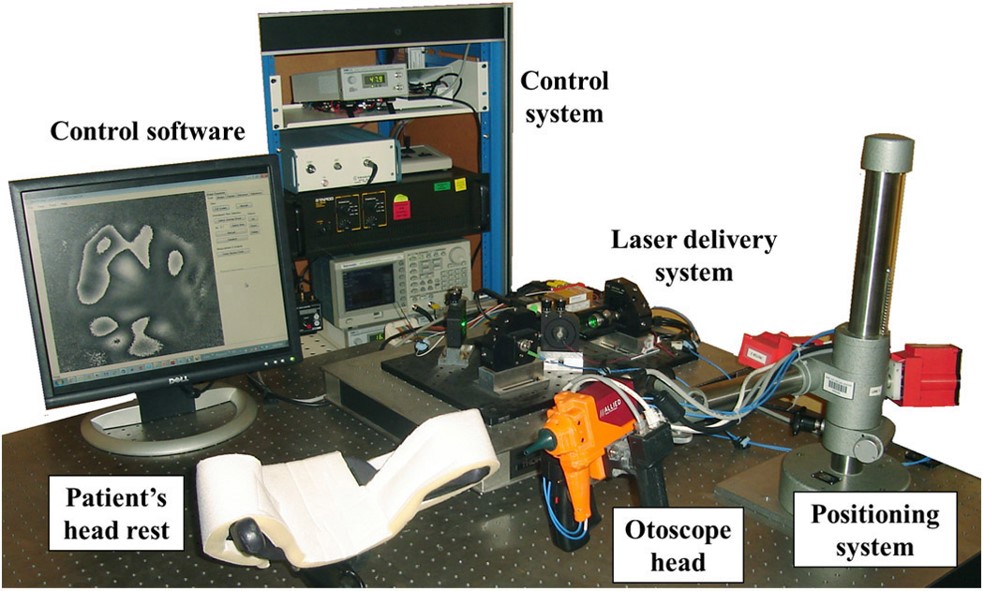
Fringe Projection
Fringe projection is a holography technique used to measure shape and/or deformations of large objects. A sinusoidal image alternating light and dark is projected onto the object of interest. From acquiring a series of these images and running a series of algorithms on it, the shape or deformations of the object can be generated. From this, a 3-dimensional model can be produced.

Art conservation measurements: (a) unwrapped image; and (b) 3D representation of sculpture.
Noninvasive techniques for surface measurements have become paramount for quality analysis in industrial applications, art conservation and restoration, as well as precision aid in medical procedures. The critical advantage of the fringe projection optical technique is the ability to provide full field-of-view information. Our team has developed and integrated novel techniques into a high-speed Fringe Projection system for real-time 3D shape measurements.
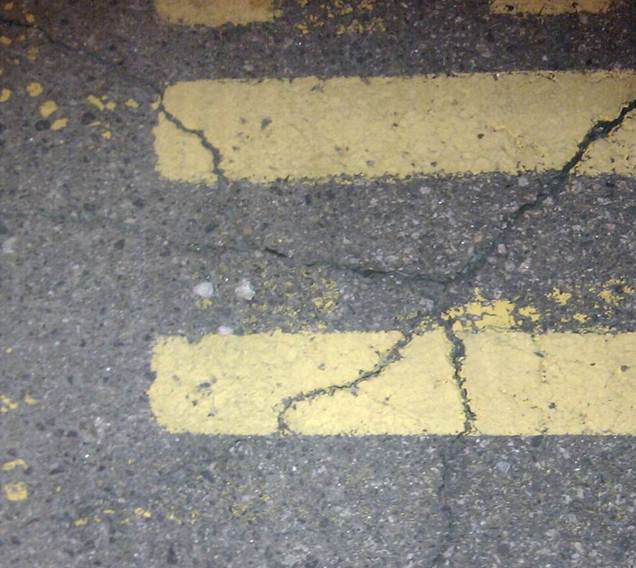
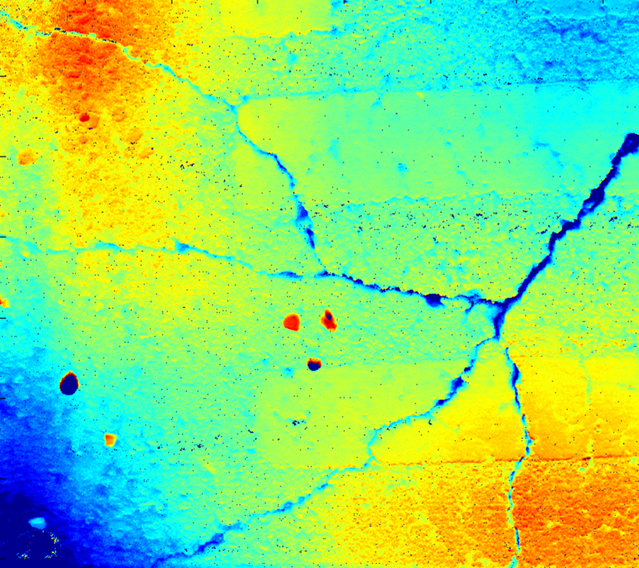
Actual 3D road information
High-speed Imaging & DIC
Digital Image Correlation is a robust, easy-to-use and multipurpose technique used to measure shape and/or deformations of micro/meso/macro scale objects. The random speckles on the surface of the object that could be the natural and/or artificial feature of it changes when the surface deforms. By registering and tracking these grey speckles between subsequence images using correlation algorithm the deformation is measurable. By knowing the deformation, strains are obtained and finally the material modulus of elasticity when use in Hook's law gives the stresses as well. Theoretically the algorithm is able to track the deformation either in-plane or out-of-plane with the resolution in order of 1/100th to 1/20th of the pixel size of the camera.

Ankle Foot Orthotics (AFO): (a) Custom AFO Based on patient requirement; (b) Custom AFO prepared and painted for measurement; (c) 3D DIC measurement set-up ; and (d) shape and deformation representative results.
Visit DIC webpage
High-speed Digital Holography (HDHS)
Measurements of human Tympanic Membrane (TM, eardrum) motions require nanometer and microsecond spatio-temporal resolutions while maintaining a field-of-view of about one centimeter. Previously, we have developed holographic methods to successfully measuring continuous and transient responses of post-mortem TM. We are developing novel High-speed Digital Holographic Methods in combination with recently developed image and data processing algorithms to overcome such challenges. Our developments have unique capabilities that utilize the full spatio-temporal resolution of high-speed cameras (i.e., >147,000 points at >42,000 fps) to measure nanometer-scale TM motions in the audible range (0.02-20kHz).
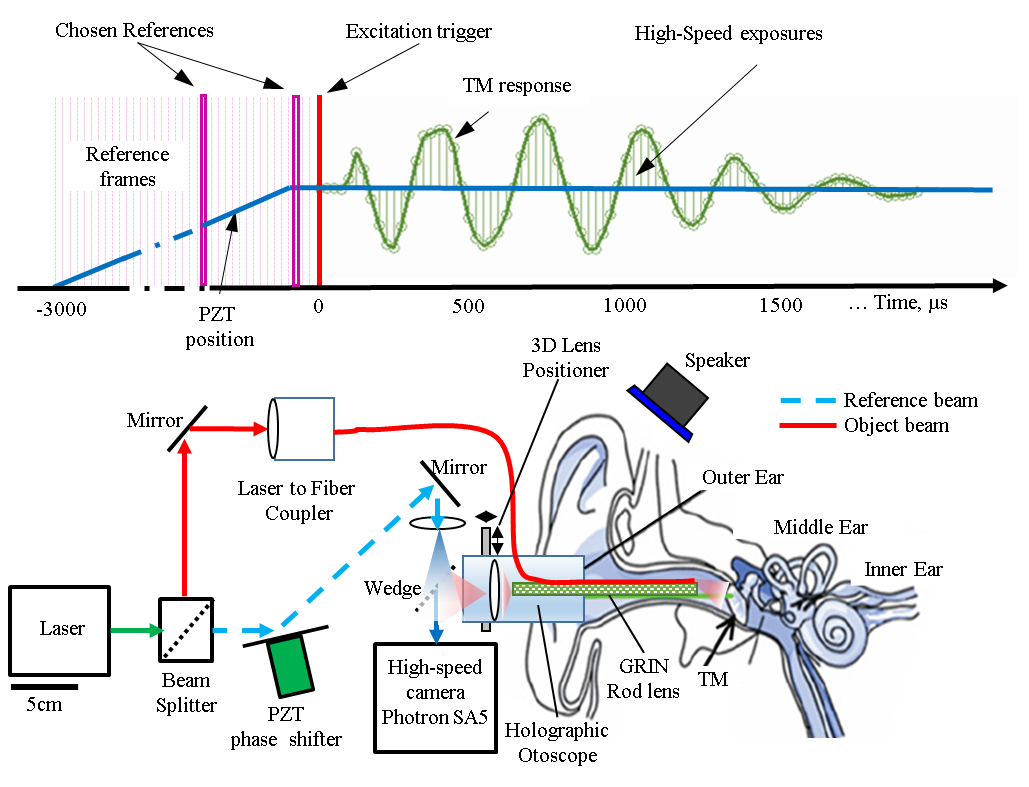
Schematic representation of the HDHS and the acquisition timing diagrams: (top) timing diagram demonstrating the principle of operation of the high-speed 2+ N frame acquisition method; and (bottom) schematic representation of the developed high-speed holographic system equipped with a custom-made otoscope. Illumination and observation inside the ear canal is performed by fiber optics and a GRadient INdex (GRIN) rod lens, respectively. The otoscope has a relatively large depth of focus, which is sufficient to measure motions of the cone-shaped TM.
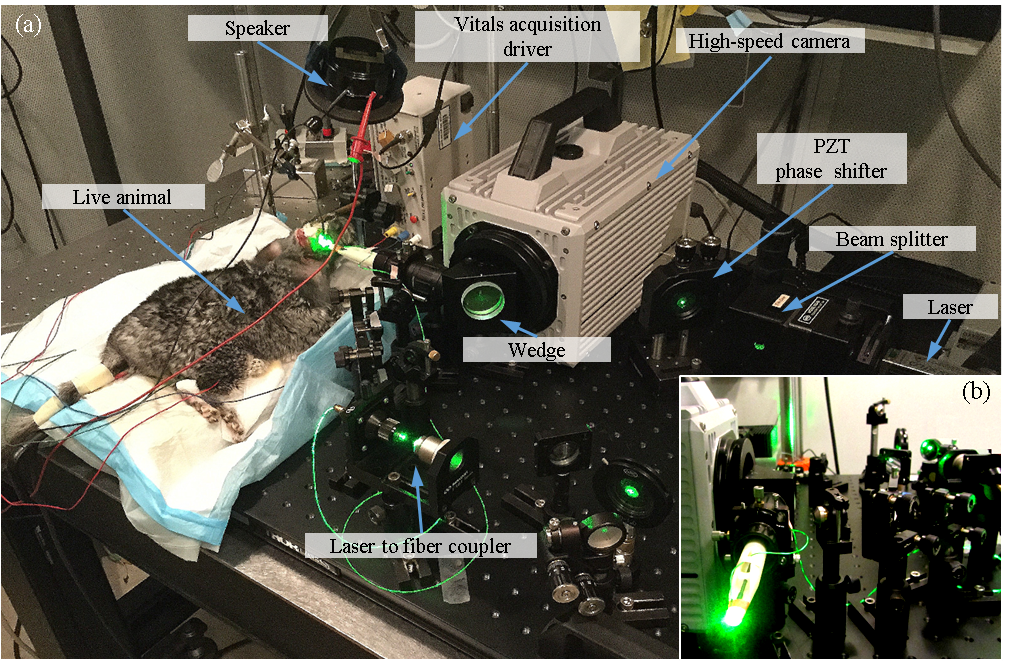
HDHS setup during live animal measurements: (a) opto-mechanical components inside a double-walled sound booth; and (b) view of the otoscope head.
Optoelectronic Otoscope (OEHO)
The optoelectronic otoscope is a project being developed at the CHSLT in conjunction with Harvard Medical School and Massachusetts Eye and Ear Infirmary (MEEI).
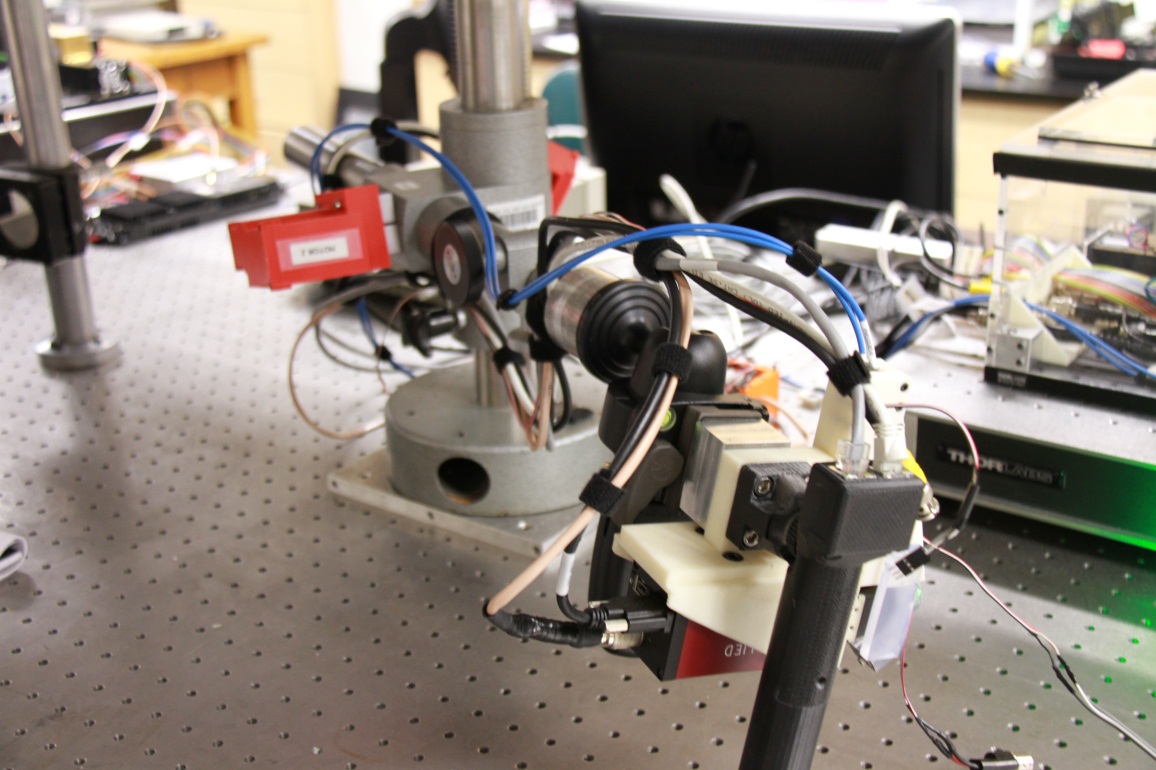
Otologists are in need of quantitative methods to research and diagnose hearing loss. The current state of the art is single point measurements on the tympanic membrane (TM). The goal of this project is to bring live, full-field-of-view, 3-dimensional measurements to clinics and researchers to provide a better understanding of the tympanic membrane andhearing loss.
The system uses a custom-designed laser delivery system (laser diode, beam shifting hardware and other optics) and optical head (camera, otoscope) to observe the behaviorthe TMs as they are exposed to audible stimuli.
An experimental version is currently deployed at MEEI and further development is taking place at CHSLT.
MEMS
Microelectromechanical systems (MEMS) are micro- and nano-scale components with mechanical and electronic components embedded on a chip.
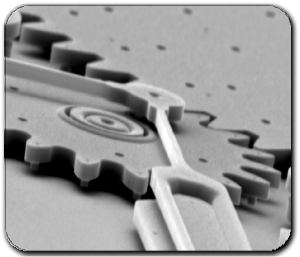
Because of the small size, the deformation of MEMS components is difficult to measure: non-destructive and non-contact measurement are critical. Using a microscope with laser interferometry, the nanometer-scale deformations of components can be measured accurately. These measurements are necessary to quantify theeffects that stimuli such as temperature or movement have on the device.

Decomposition of FEM solution corresponding to the first mode vibration of a conical latex membrane

Representative results of the DOEHS system in stroboscopic mode: Phase map (a) of the amplitude distribution of a copper foil membrane; a full-field-of-view displacement map (b) across the membrane indicates a 408nm p-p maximum amplitude; an isometric view (c) of the 3D shape of the displacement map.
The CHSLT requires specialized software to perform many of its tasks, either to control hardware or automate complex tasks. Software is developed by the CHSLT staff.
LaserView
LaserView is custom platform for controlling holographic hardware, syncronizing cameras, and acquiring phase-shifted images.
HoloStudio
HoloStudio a post-processing companion to LaserView. It allows for processing of image and video files captured from LaserView, and output to various formats
PXHOLO
Written in IDL, PXHOLO is CHSLT program for applying filters, unwrapping phase maps, displaying 3D models, and performing other holography tasks. In conjunction with otherutilities it is used to process imagery acquired from LaserView.